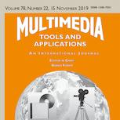Advertising channels have evolved from conventional print media, billboards and radio advertising to online digital advertising (ad), where the users are exposed to a sequence of ad campaigns via social networks, display ads, search etc. While advertisers revisit the design of ad campaigns to concurrently serve the requirements emerging out of new ad channels, it is also critical for advertisers to estimate the contribution from touch-points (view, clicks, converts) on different channels, based on the sequence of customer actions. This process of contribution measurement is often referred to as multi-touch attribution (MTA). In this work, we propose CAMTA, a novel deep recurrent neural network architecture which is a casual attribution mechanism for user-personalised MTA in the context of observational data. CAMTA minimizes the selection bias in channel assignment across time-steps and touchpoints. Furthermore, it utilizes the users' pre-conversion actions in a principled way in order to predict pre-channel attribution. To quantitatively benchmark the proposed MTA model, we employ the real world Criteo dataset and demonstrate the superior performance of CAMTA with respect to prediction accuracy as compared to several baselines. In addition, we provide results for budget allocation and user-behaviour modelling on the predicted channel attribution.
翻译:广告渠道从传统的印刷媒体、广告牌和广播广告演变为在线数字广告(ad),用户通过社交网络、显示广告、搜索等接触一系列广告运动。广告商重新审视广告运动的设计,以同时满足新广告渠道产生的要求。广告商还必须根据客户行动的顺序对不同渠道的触摸点(视图、点击、转换)的贡献作出估计。这种捐款计量过程通常被称为多触摸归属(MTA)。在这项工作中,我们提议CAMTA为用户个性化的MTA提供一个新的深层次经常神经网络结构,在观察数据方面,这是用户个性化的随机归属机制。CAMTA尽可能减少频道跨时间步和触摸点分配中的选择偏差。此外,它以原则方式利用用户的改变前行动来预测频道的归属。为了对拟议的MTA模式进行定量衡量,我们使用真实的世界域图数据设置,并展示CAMTA在预测用户预测定位数据定位方面优异性性业绩,以预测预测预测用户的进度基线。





